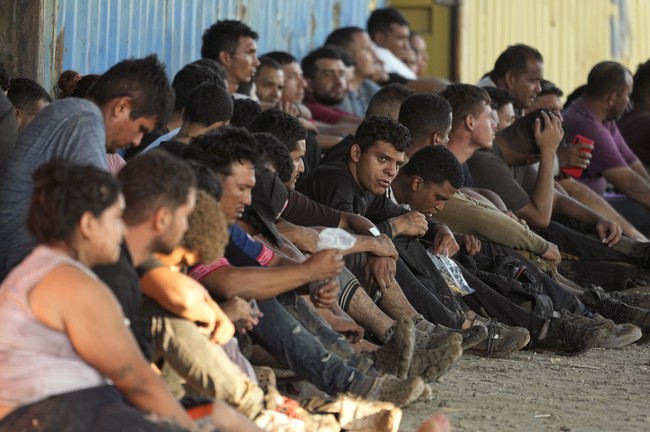
prepping.com
ALERT – Dire Warnings and Prepping Options – TIME is SHORT
? ? ? WATCH THIS NEXT – THIS will disappear FIRST! https://youtu.be/_hc5EO3E6qk ? ? ? If our content has helped you in any way, consider buying us a cup of coffee… Thanks! https://buymeacoffee.com/goshenprepping Attention all Preppers and Patriots… We must all prepare for what’s coming… Our channel is dedicated in getting you ready! Purchase downloadable and printable booklets and checklists from our store: NEW Printable Medical Supply Checklist Printable 72-Hour Preparation Checklist Basics of Preparedness Booklet AND our Family Favorites Cookbook SPECIAL NOTE: If you download the Basics of Preparedness FULL PACK – it includes all the other downloadable checklists. It includes everything except the cookbook. http://outofgoshen.com/wp/store/ Sign up for our FREE Newsletter – Join 13,000+ Subscribers! https://goshenprepping.com/wp/welcome/ Thanks to our AMAZING Sponsors – They make Goshen Prepping possible: American Reserves – Food, Water Purification, and Survival Gear https://www.americanreserves.com/ Chose your Discount Code – GOSHEN10 – to get a free 10% off your order or – GOSHEN – to get a free 72-Hour Food and Drink Supply Be sure to put the 72-Hour kit in your cart before typing in the code GOSHEN. Food or Survival Gear qualifying purchase must be made to get the free kit. MIRA Safety – Supplier of Gas Masks and Supplies https://alnk.to/5Q5rAb7 Get your EcoFlow Solar Systems EcoFlow Delta 2 Max: https://amzn.to/4gftK7A Bluetti Solar Generators AC240: https://amzn.to/4bMe5cN Oukitel Solar Generator System https://us.oukitel.com/pages/p2001-plus-power-station?utm_souce=KOL&utm_medium=%20Goshen%20Prepping&utm_campaign=p2001%20plus Powerful Mango Whole-House Solar Generator System It’s the ultimate system to power your home if the grid goes down https://bit.ly/GoshenPrepping Pick up your GoldenMate UPS today: https://amzn.to/4c6SsUH ITEHIL Portable Water Filtration System https://itehil.com/collections/on-sale/products/itehil-self-pumping-outdoor-water-filter?ref=etrwrgmb&variant=42420407763112 Use the Code: Goshen40 to get $40 off your purchase of the System Alpine Gold – Sign up for Free – Best way to purchase GoldBacks https://alpinegold.com/purchase/ref/GoshenPrepping/ Keystone Meats https://amzn.to/3XFLZvE Want to Shop Azure? It’s free to sign up! They have tons of fresh, good food and organic, non-gmo grains! https://www.azurestandard.com/?a_aid=e4ea3c93db Goshen Prepping Facebook Group – come join us with prepping chats https://www.facebook.com/groups/538038804199117 Harvest Right Freeze Dryer https://affiliates.harvestright.com/1610.html Check Out and Subscribe to Naomi’s Channel – The Knowledge Realm https://www.youtube.com/@theknowledgerealmaccount/featured Want to help Goshen Prepping? It’s so simple! Simply click on the link: https://amzn.to/460OQjw Even if you don’t buy one of our items, we will still get a portion of any purchase from Amazon after clicking the link, and your price doesn’t change! Simply by shopping, you can help our family, and we appreciate it more than you know. As Amazon Affiliates, we thank you for thinking of us on your purchases! If you would like to show appreciation for the videos produced by Out of Goshen, you are welcome to donate. It is greatly appreciated! You can even comment on the contribution if you wish the donation to go to a specific person! https://www.paypal.me/OutofGoshen If you would like to send mail to Goshen Prepping: Goshen Prepping PO Box 333 Clare, MI 48617 Email – Feel free to drop us an email and say hello! Eric@OutofGoshen.com Please subscribe and give a thumbs up! We appreciate you joining us for this episode! #Prepping #Survival #Preparedness Our channel focuses on Real World, expert advice in food shortages, food inflation, Supply Chain issues, Prepping for SHTF, SHTF Prepping, SHTF 2023, Emergency Preparedness, Disaster Preparedness, Natural Disaster, Medical, Home Defense, Protection, Preparedness, Essential, Security, and Power Grid Failures

















